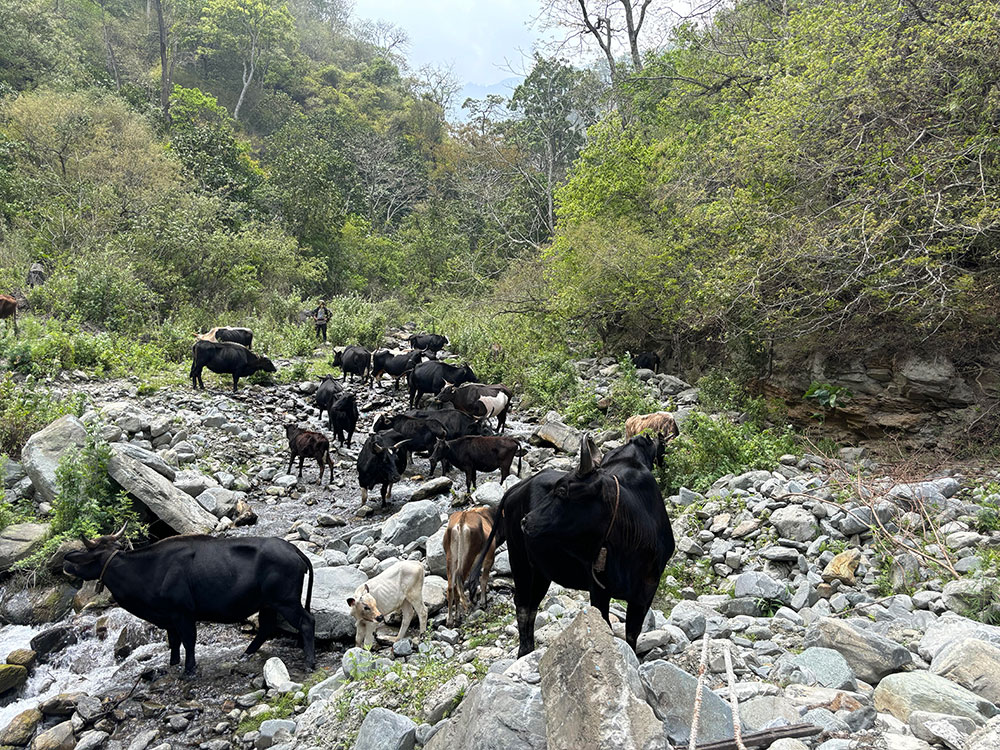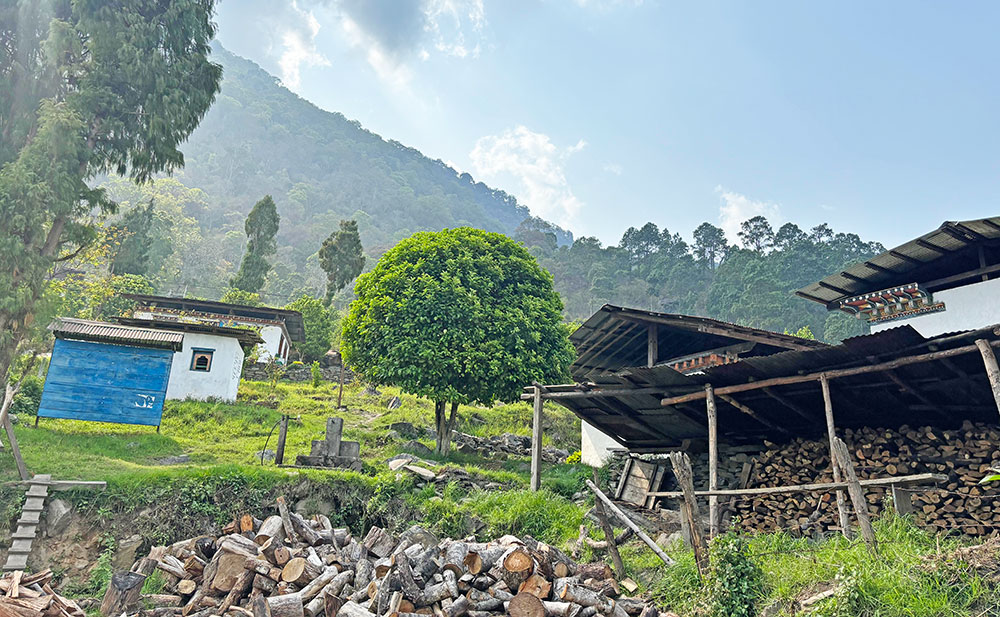Yangyel Lhaden
Travelling from western to central Bhutan in April is a captivating experience, as nature showcases its beauty with vibrant colours. Picture-perfect landscapes greet travellers, with rhododendron flowers adding splashes of red, pink, and white to the lush green surroundings. As you journey beyond Pelela Pass, just imagine, the number of vehicles dwindles, offering a serene atmosphere where one can almost feel like they have the road to themselves.
Continuing the adventure past Trongsa and heading south along the Trongsa-Zhemgang highway takes travellers to the villages inhabited by the Monpa community. These villages are less frequented by tourists, providing an opportunity to immerse oneself in the authentic culture and lifestyle of the Monpa people. Away from the bustling tourist spots, travelers can experience the tranquility of rural life and witness the unique traditions of this community.

The feeder road leads to Dangdung hospital and then to the Langthel Gewog
Exploring these lesser-known destinations not only offers a chance to admire Bhutan’s natural beauty but also allows for meaningful cultural exchanges and a deeper understanding of the diverse communities that call Bhutan home. It’s a journey that promises both scenic delights and enriching experiences off the beaten path.
In Trongsa, the Langthel gewog comprises three villages: Wangling, Jangbi, and Phumzur. These villages are home to the Monpas, considered to be the earliest settlers of Bhutan.
I travelled from Tangsibji, Trongsa, to Jangbi, taking a shortcut road that passes through the Mangdechhu hydropower plant, thus avoiding Trongsa. Along the route, you encounter various villages like Taktse, Samcholing, and Kuenga Rabten until you reach the junction where the old and new highways of Sarpang-Gelephu-Trongsa meet. From there, to reach Jangbi, you need to continue along the old highway.
A small feeder road leads to Dangdung hospital and then to the Langthel Gewog Administration.
Continuing along this path, the road gradually transitions into a rough but well-paved surface, compacted to minimise dust. As we progress, we notice a rise in temperature, typical of the southern region of Trongsa. Upon crossing the bridge over Mangdechhu, the landscape opens up to reveal the villages inhabited by the Monpas.
I didn’t encounter a single vehicle on the rough road, and the only traffic jam was caused by the hundreds of cows, most of which were Jatshas. These cows, with their massive build, appeared unfamiliar with vehicles; they didn’t yield space for vehicles to pass, as their owners were nowhere to be seen. It felt as though the road was more suited for the Jatshas and horses than for vehicles.
My colleague, who also served as our driver, took on an additional responsibility on the road. He had to act as a conductor, directing the Jatshas to clear the way for our vehicle. This added task made the journey to Jangbi village quite arduous, extending the travel time to several hours.
In one incident, we witnessed a lone mother Jatsha running frantically. My colleague and I were puzzled by her behavior until we noticed her young calf nearby. She stopped abruptly to protect her offspring, emitting a low “moo” as we honked our horn. Despite our attempts to proceed, she refused to move until both she and her calf began to flee. Feeling helpless, we watched as the mother retreated to the upper road, while the calf matched the speed of our car. In an effort to encourage the calf to stop running, my colleague increased our speed.
The landscape leading to the village was dominated by dense forests under the scorching sun, with the Mangdechhu river flowing alongside, and dotted with numerous cows and horses.
Upon reaching Jangbi village, located in rugged terrain with winding roads, we encountered the first house where a young woman was tending to her farm. Seeking directions to Ap Tawla’s house, she gestured uphill and advised, “Take a turn after the school, and you’ll reach his house.”
At Ap Tawla’s house, we found a bustling shop where many Monpas had gathered, engaged in lively conversations in their native Monpa language while enjoying refreshing sodas, taking a break from their work.
It took us five hours from Tangsibji to finally meet our contact, Ap Tawla, and hear captivating stories about local healing practices from him.


